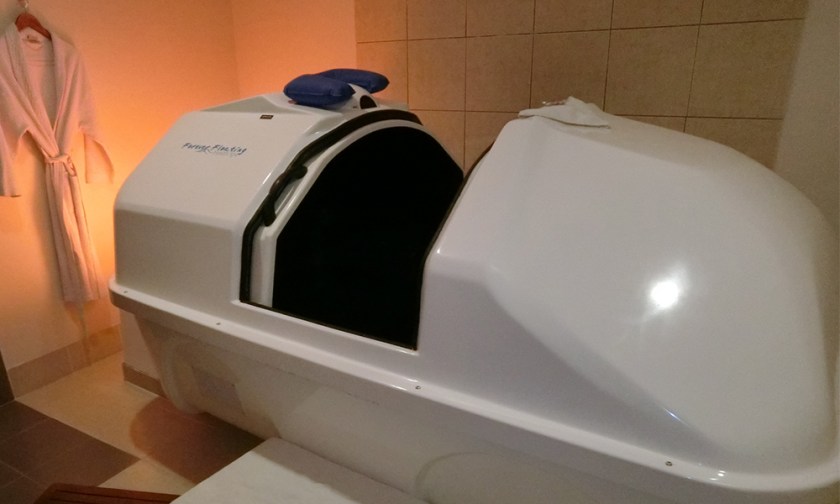“Some people are a bit nervous floating for the first time. It’s dark and it’s enclosed,” says Austin, owner of Forever Floating, a health spa in Paddington, Sydney.
It’s 7am on a Monday morning and two people are mid-session downstairs, so he keeps his voice low. The online booking schedule for the week ahead (visible on his MacBook) is practically full, bursting with fans of floating.
Opening 6am-11pm, a 75-minute session in a tank costs $49.

Austin, a former lawyer, opened up shop in December last year, making him a pioneer of the floating phenomena in Sydney: “They’re popping up everywhere now! I’m currently helping four others set up similar establishments.”
He doesn’t mind that they could be competition for his business, declaring: “The more people floating, the better!”

At Forever Floating, there are four rooms with tanks. They are warm, scrupulously clean, with luxurious bathrobes hanging beside hotel-esque high-jet showers.
The tank is an oversized fibreglass bath, shaped like a pod. It looks a race car from the future, but they were first developed in the 1950s, by neurologist John Lilly, who sought to test how the brain would respond without stimulation.
When immersed in the temperate water, your body defies gravity.
“Everyone can float,” Austin explains. “We’ve had really big body builders come in, plus the guy who holds the Australian record for bench pressing visits three times a week.”
It works because the water is saturated with epsom salts, making it super-dense.
Epsom salts also inhibit the growth of bacteria. “Spas are a naturally perfect environment for breeding bacteria,” Austin says. “Our water goes through a filtering process using UV light — it’s a test to show whether it’s clean. Every time someone comes in, the water is filtered through.”
Launching into the salty tepidness, it’s important not to get any in your eyes. You won’t be blinded permanently, but it stings so much that there’s a spray bottle of unsalted water in case it happens!
Sliding the tank lid shut, the enclosure becomes a pitch black cocoon of silence. If you’re claustrophobic, it’s reassuring to know that you can turn on the tank lights, and pull back the roof at any moment.
“Some people go in and their brain just chatters away the whole time and they’re unable to relax,” Austin explains. “It’s hard to wind down when you’re thinking about not thinking. Most people try and focus on their breath.”
According to research initiated by Lilly, if you can achieve relaxation while floating, there’s an automatic increase of theta waves in the brain. This simulates an REM sleep, complete with a release of endorphins.
While many frequent the tanks to reduce stress, some sufferers of chronic pain have found relief in floatation therapy.
Gravity is neutralised so there’s no pressure on the joints. “Your body doesn’t have to worry about dealing with sight, sound or touch either. It frees up a lot of energy that can be used for healing.” Austin reasons.
Showering off the salt post-treatment, softer skin and silkier hair are palpable. So, whatever your reason for floating, its beautifying effects are an added bonus.




